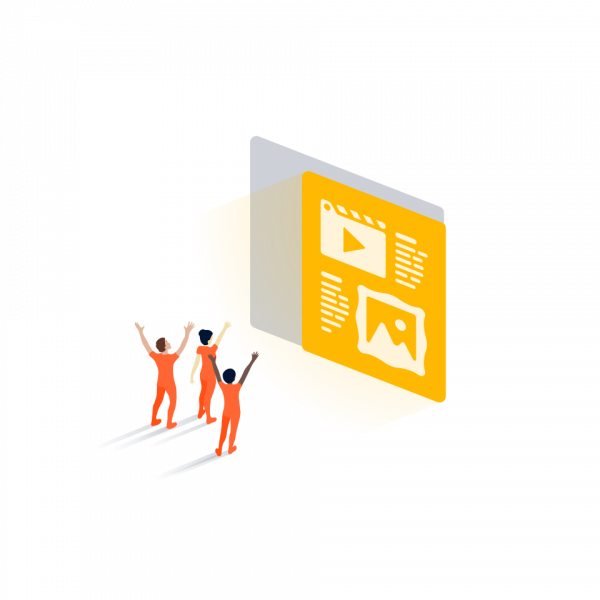Mind over matter: Why you need to transform your thinking, to transform your business
Transform or die, is the stark ultimatum facing today’s businesses. We’ve seen the real-life consequences of companies failing to adapt fast enough, think back to once-dominant players like Blockbuster, Kodak and Toys R Us, annihilated overnight by disruptive opportunists Netflix, Instagram, and Amazon.
But despite expert calls for action, business leaders are still dragging their heels when it comes to transformation. A 2018 study by McKinsey claims only 37 percent of companies report successful implementations of digital transformation programs. So what’s holding businesses back from transforming, and what can leaders do to accelerate efforts?
We caught up with John Turley, Adaptavist’s newly appointed Digital Transformation expert, to understand his view on what leaders need to do to break the deadlock and forge ahead.
Q1. How do you see the industry transforming over the next decade, and what role will technology play in accelerating that transformation?
[ John ] Technology has become increasingly powerful, with advancements accelerating at a much faster rate than most businesses can keep up with. But when it comes to business transformation, technology is leaps ahead of culture and mindset.
The role that technology plays in enabling transformation is critical; if you can’t provision your infrastructure quickly enough to get new products out faster, then your hands are tied when it comes to delivering more value to customers. But technology is still just one part of the transformation puzzle. Unless you pay equal attention to developing your people and culture alongside your tools, your efforts won’t scale.
As we move towards the future, the human element of transformation will start to play a more prominent role. In parallel, we’re going to see some radical changes in how people work and collaborate, especially when it comes to co-innovation with partners and managing communication across multiple geographically dispersed teams.
Tools like Slack and Confluence empower people to collaborate in a way that works for them, but it’s important to remember that collaboration can’t be imposed, and if you don’t unify people around a vision of the future they believe in, use of tools like these will be limited.

Q2. Has the role of IT moved from back office to centre stage?
[ John ] IT enables change, but on its own, it’s not a transformative force for change. The right culture and mindset for change have to co-exist alongside it. For transformational change to happen, people need to learn to think differently, to welcome obstacles, challenge assumptions, and treat every experience as an opportunity to develop and grow.
The question of whether IT has evolved to take center stage as a ‘front office’ function, implies today’s organisations should still operate in a segregated way, with clear divisions between back and front office teams. In the new world organisations have to become flatter, faster, and more dynamic to deliver new value to customers. I’m not proposing that organisations should get rid of traditional structures and functions if they work for them. It’s about thinking beyond boundaries and trying to take a more fluid, less rigid approach.
In an increasingly complex, volatile, and unpredictable world, delivering a compelling customer experience requires all teams to act as one, with no delineation made between different parts or functions of the same business.
Part of the leap that we need to make is to no longer see ourselves as belonging to the back office or front office but to see ourselves as people who are collectively creating value for customers.

Q3. Where do organisations stand to benefit in digitally transforming their businesses? And what’s in it for customers?
[ John ] Digitally transforming your business will help you make more money, reduce cost, and keep your shareholders happy. But these are all side-effects, by-products of the more significant but less tangible benefits of transformation.
When people work in an organisation that puts people’s development first in this way, you can trigger inspiration and creativity. And then making money, cutting costs and keeping your shareholders happy become by-products of that bigger shift in culture. For me, that’s one of the most exciting prospects of transformation.
And what does the customer get? In a way, the benefits to the business and the customer are similar. When you create a culture where people are valued, customers also start to feel valued. With an end-to-end digital approach, customers benefit from a more seamless customer experience and highly personalised products designed to improve their lives.

Q4. For digital transformation success, which comes first, the right cultural mindset for change or the right technology to empower that change?
[ John ] It doesn’t matter which comes first; transformation can start anywhere. In most organisations there will be pockets of transformation activity going on, patterns of behaviour and thinking more aligned to the future than the past.
The key for leaders is to identify these pockets and focus on amplifying the behaviours of the people who belong to them to spark a broader mindset change. Transformation pockets will only scale so far if they are not accompanied or followed by a bigger philosophical shift in culture.
Alternatively, leaders can work on designing a future state from the top of the organisation, cascading new behaviours and approaches down through the rest of the organisation. But progress can be slow this way, and people are always more likely to respond positively to change that has developed in an organic, not mandated way.

Q5. What role can business leaders play in shaping a culture that embraces change as the new norm?
[ John ] Culture is a powerful lever to shape and lead change across any organisation, large or small, incumbent, or startup. When change is the new norm, things can be unpredictable, even volatile.
To shape a culture that embraces this new kind of norm, leaders have to work on transforming their mindsets first to align with the future they want to create. By emulating a new set of behaviours from the top, they allow others to get on board with the new way of thinking. To create a culture that embraces change, you need a leader who’s prepared to go on that journey of self discovery, openly share their experiences and learnings, and inspire others to come on the journey too.
When leaders start to win over hearts and minds in this way, they begin to create a psychologically safe environment where people can experiment without fear of failure or judgement. A lot of us have come from environments where we were encouraged to hide weaknesses and inflate strengths, so this is a huge and exciting shift forward.

Q6. To build a digital-ready workforce, what new skills and capabilities do businesses need to keep pace with rapid technological change?
[ John ] Technical skills and capabilities are going to continue to be critical. But the ability to share knowledge, be creative and contribute to complex projects will grow in importance. That’s why collaboration is so crucial. Unless large groups of people are collaborating, you can’t unlock the value of individuals.
Leaders need to think about the patterns of relationships that exist right across the whole organisation because the structure of those patterns will be closely related to organisational performance when it comes to creativity and innovation etc.
The future is going to be less about leaders instructing teams on what they need to deliver and more about creating an environment in which people can build valuable relationships, feel empowered, and flourish as human beings.









